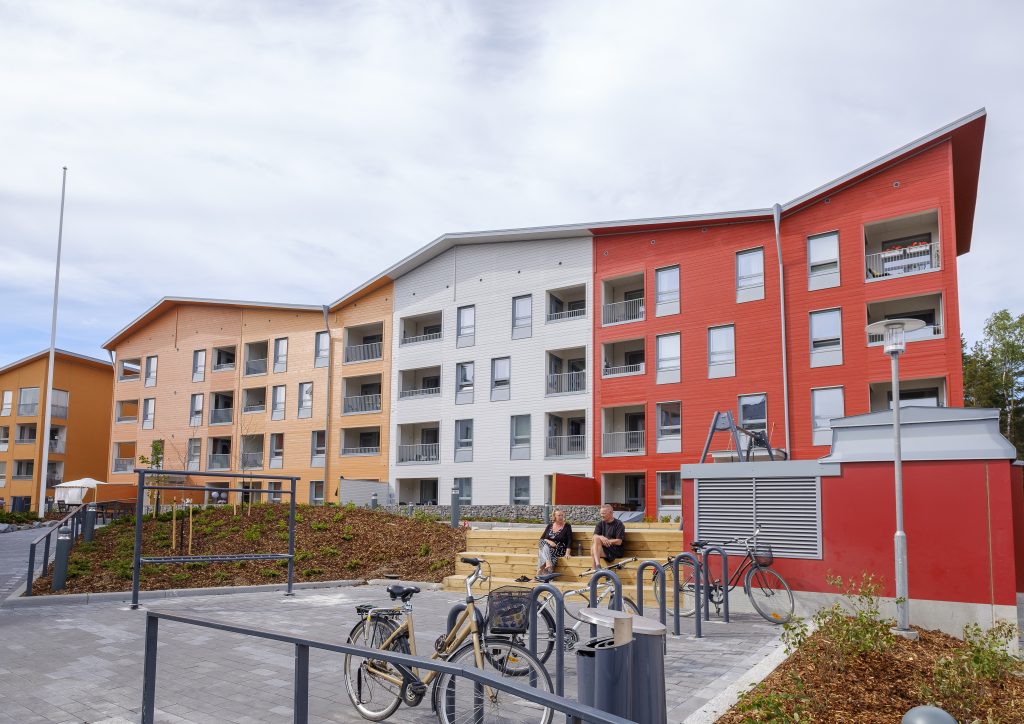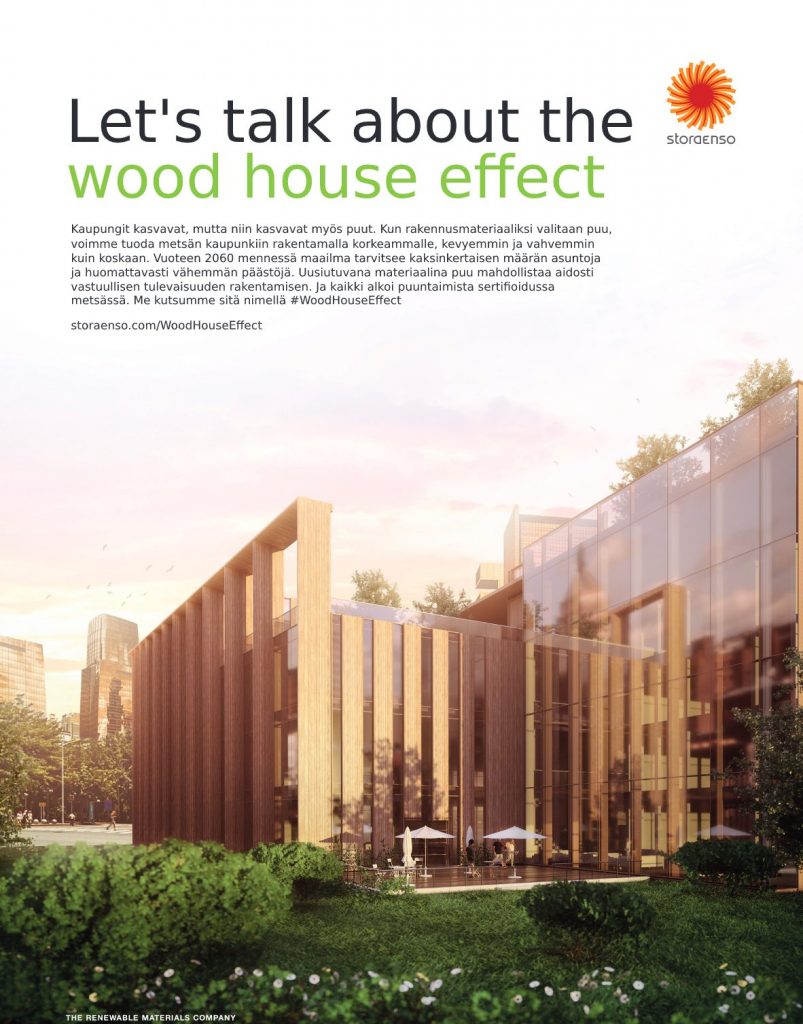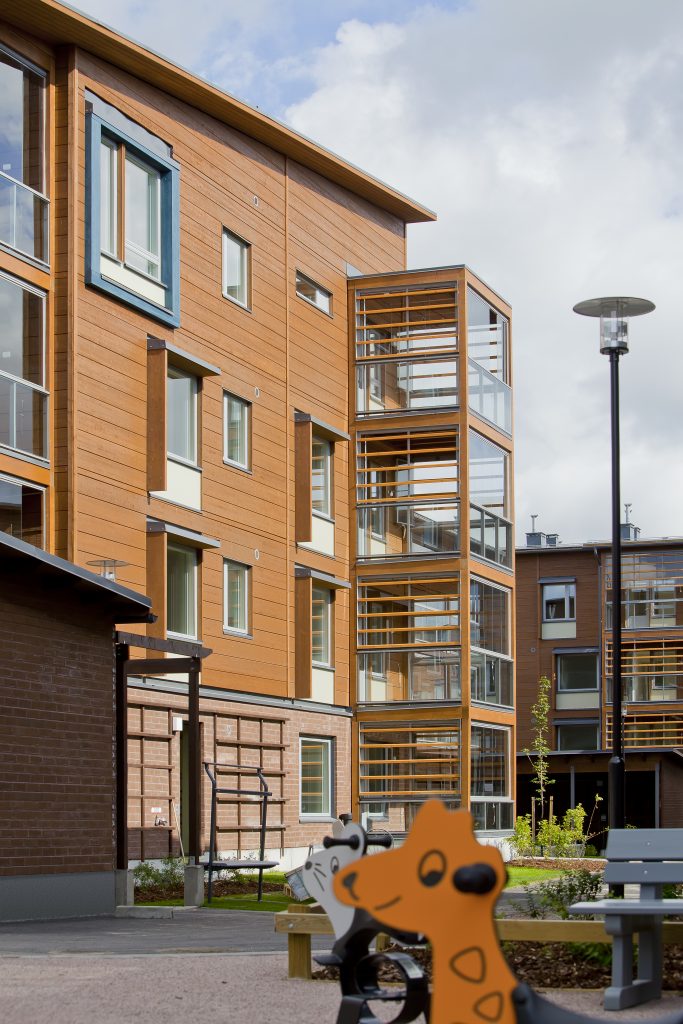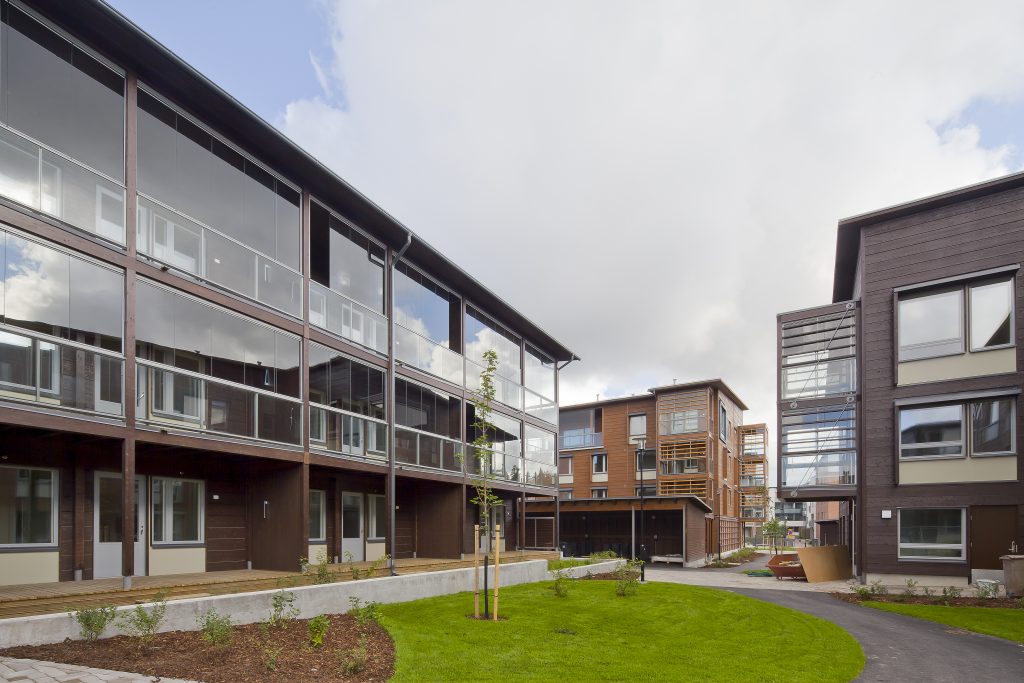The Re-thinking Urban Housing programme promotes wood construction

Text: Anne Soininen | Photographs: Puuinfo
Read the article in Finnish: Kehittyvä kerrostalo -ohjelma edistää puurakentamista
The City of Helsinki’s Re-thinking Urban Housing programme aims to develop apartment building construction and housing in Helsinki. The programme’s key themes are easily adaptable apartments, pleasant courtyard spaces, affordability, a sense of community, resident- centred design and energy efficiency.
Established in 2009, the programme has placed an increasing emphasis on the development of wood construction in recent years.
In 2013, an entire block of wooden apartment buildings was completed in Viikki. The apartments were constructed using Metsä Wood’s wooden multi-storey building system. The project proved the production efficiency and competitiveness of the new system for multi-storey construction. This system, based on wooden elements and pillar-beam frames, also enabled flexibility in laying out apartments. The project’s main contractor was Peab Oy.
In 2018, Rakennusliike Reponen constructed two apartment buildings in the neighbourhood of Kuninkaantammi. They had almost identical interior spaces, but one building used a concrete frame and the other wood. The Re-thinking Urban Housing project compared the differences between the concrete and wooden buildings during the design and construction phases and after people moved in.
The near future of the Re-thinking Urban Housing programme includes other interesting wood construction projects. In this issue, we present Elonkirjotalo, which promotes biodiversity through its structures, land use, and use of the rooftop.
In addition, there are plans for a Future Wooden Building project that will compare three different wooden apartment buildings during the design, construction, and residential phases. In the meantime, the Yrjö and Hanna Foundation’s Jätkäsaari Circular Economy Block project is planning a CLT-based circular economy building block that can withstand the area’s demanding seaside conditions. We will give you a glimpse of future projects in upcoming issues of Wood magazine and on Puuinfo’s website.
Over the years, the Re-thinking Urban Housing programme has encompassed some thirty projects. For builders and contractors, the programme is an opportunity to try something new and also a platform for their own development themes. Most projects are on city-owned land.
The application process for the program is currently being updated. More information on the new process should be available in autumn 2021.
For more information, see: kerrostalo.hel.fi
The article has been published in October 2021 in Wood magazine 2/2021.
- Read the whole Wood magazine 2/2021.
- The next magazine will be published in the spring of 2022. Subscribe it now.
- Articles selected by Wood Magazine advertisers are published as e-articles in addition to the print magazine.



